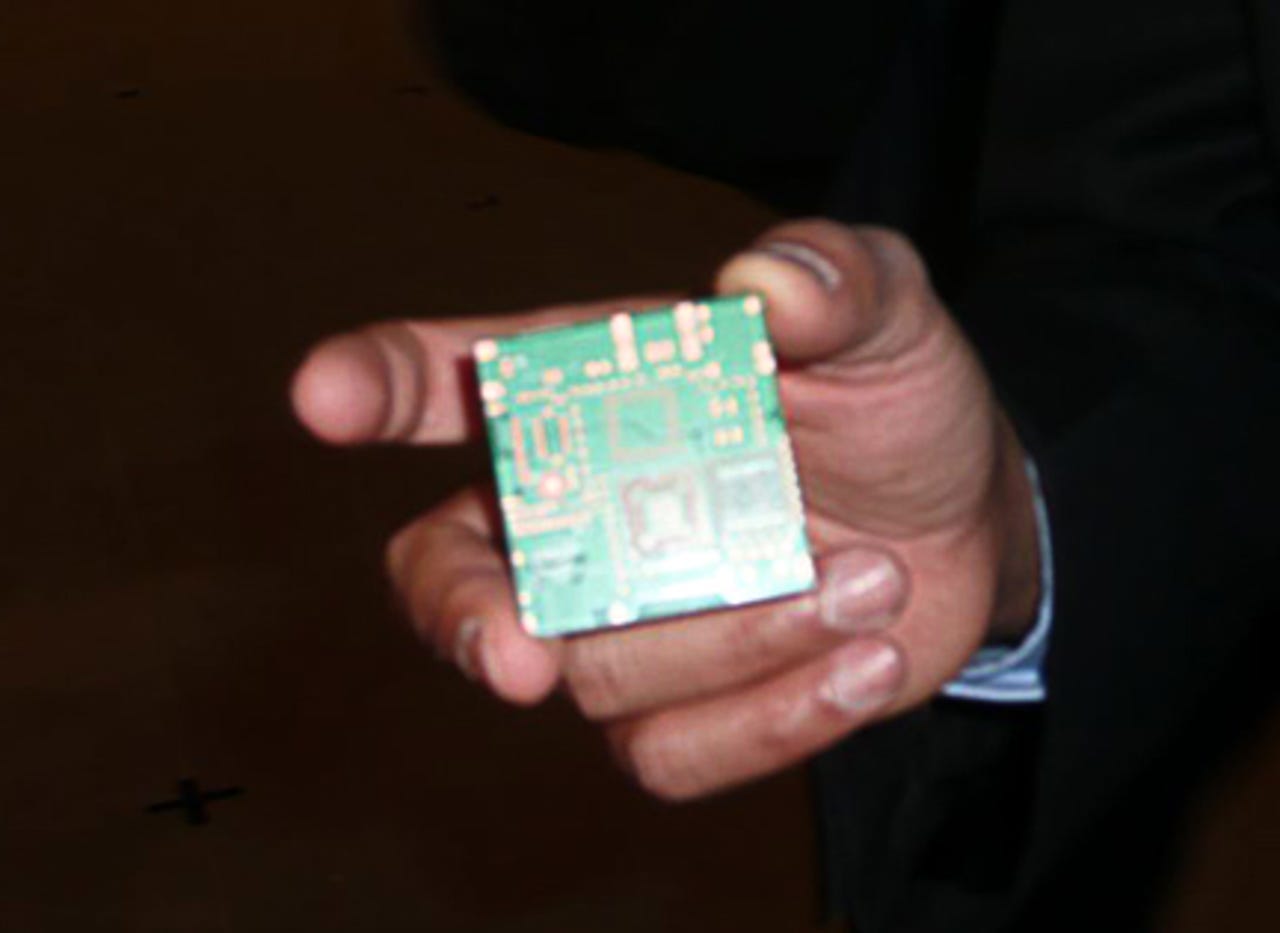Photos: Intel's vision for the future


The world's smallest PC motherboard. This unpopulated PCB will build a PC with wireless and high-performance graphics, based on the forthcoming Moorestown platform. This system-on-a-chip is the successor to the Centrino Atom (Menlow) platform, and is rumoured to be destined for a future iPhone.
Intel's robot hand gently fondles its master — electric field sensors in its fingertips detect the presence of flesh without actually having to touch it.
A prototype bio-sensing chip that can be designed to check for over a hundred different compounds in blood simultaneously. Intel intends that these are built into home checking units that can keep an eye on people's health without needing a visit to the doctor.
A 25-watt methanol-based fuel cell from Cambridge company CMR, in front of another one busily converting alcohol into laptop power. As is traditional, the company won't say when this will be commercially available.
The mighty Atom (formerly codenamed Silverthorne) and its System Controller Hub support chip (formerly codenamed Poulsbo). The Atom, Intel's tiniest and lowest-power processor in current production, is the smaller of the two chips. Together, the Atom/SCH combination form the Centrino Atom (formerly Menlow) platform for Mobile Internet devices (MIDs) and Ultra Mobile PCs (UMPCs).
A forest of Mobile Internet Devices (MIDs), all built around the Atom processor.
ASUS's MID follows the basic design principle of 'make it look a bit like a fatter Playstation Portable'. Hasn't worked yet, but with new silicon — who knows?
This is Hanbit's even bigger, even less portable Atom-based MID — seen here running Vista for no very good reason.
The Panasonic Toughbook MID — you can drop it, kick it and throw it, and it'll still keep on running your PC software.
Although the Toughbook MID's keyboard looks swish, it isn't suitable for heavy-duty typing.